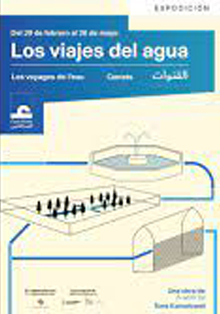From tomorrow until 26 May, the exhibition hall of Casa Árabe in Madrid will be the venue for the exhibition The Journeys of Water, by the artist Sara Kamalvand.
In collaboration with Casa de Velázquez, and with the support of the French Institute, Casa Árabe is organising this exhibition, which reflects the fact that water is the element closest to us, the origin of all cities. The water journeys are an underground and abandoned water network that dates back to the very foundation of Madrid by Emir Mohammed of Cordoba in the 9th century. This system was used for more than a thousand years before being discarded with the arrival of the industrial revolution. It belongs to a hydraulic heritage from ancient Persia known as qanat, whose infrastructure uses aquifers instead of surface water, giving rise to the civilisation of the hidden waters. The Muslim expansion of the Mediterranean basin was in part made possible by the qanat, which gave rise to landscaped ecologies in arid landscapes, and prospered through a horticultural economy.
The exhibition examines this infrastructure in Madrid, not only from a technical point of view, but also by examining the cultural legacy from the origin of the network, when the Persian garden was invented, to its counterpart in Renaissance Spain.
With his interpretation of these invisible ruins, Kamalvand undertakes the reconquest of a forgotten heritage and deciphers this urban palimpsest, in search of the indestructible traces of societies that have succeeded each other in time and will continue to do so. In the current moment of intense water scarcity and the need for alternative narratives, the work positions itself by presenting ancient knowledge, and the myths it conveys, as pragmatic and conceptual tools to address the contemporary challenges we face.






